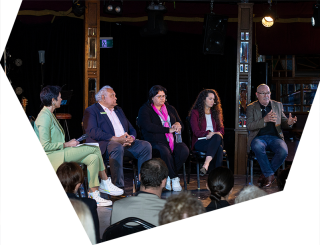
Why change is risky business - and how to navigate it.

How is project management different to change management, and where does risk management fit in this mix? Sounds like a lot of "management" going on.
Let's start with some definitions
Project management is the art and science of leading the work of a team to achieve project goals within time and resource constraints. Essentially, a project team is engaged to solve a problem. It follows that many projects will involve the implementation of some kind of change. In a nutshell, a project manager is responsible for the technical deployment of the project solution.
Change management is a systematic approach to preparing and managing the transformation of organisational strategy, systems, processes or technologies. It encompasses change at the project or organisational level. It boils down to managing and enabling the people side of change. A change manager is responsible for ensuring user adoption to achieve the desired outcome.
Ideally, the two approaches should go hand in hand.
What's the difference when it comes to risk?
Between project management and change management lies a range of deeply integrated risks. Change risks can create project risks, and vice versa.
Project risks include any potential event that might affect the project's goals and progress, either positively or negatively. The aim of project risk management is to plan and prepare for these risks before they occur, to ensure the project stays within scope and ultimately succeeds.
Change initiatives are effectively born from risk analysis - the risk of doing nothing is higher than the risk of embarking on the experimental initiative. Effect change management is actually a technique to avoid cost and a tactic to mitigate risk. But change initiatives also come with their own inherent risks, which usually centre around people adopting change.
I know, all very interesting but, so what?
What's good to know is that integrated change and project risk management are achievable with a methodical approach.
1. Identify. Start with collating all the potential factors that might impact the progress towards or achievement of the project's goals. Here, a premortem might help. This involves working backwards from the point of failure to help steer the course effectively from the outset. Change risks can be identified through initial stakeholder engagement and analysis to identify and anticipate pockets of resistance and pain points. These risks often stem from a lack of understanding or buy-in to change.
2. Analyse. Build a risk register to list each risk and start to consider the probability and impact of each. Assign risk ratings to quantify and prioritise risks. This should help rank and compare project and change risks, or even identify shared or common risks between the two.
Risk management involves planning for and anticipating risks. Risk mitigation involves the use of tools and techniques to deal with risks when they eventuate.
3. Evaluate. Probe the information. What's the risk threshold of the organisation, and how many risks exceed this threshold? Are risks within or outside your capacity to control? Comparing project and change risks, does one seem to outweigh the other? Evaluation helps focus and direct mitigation strategies.
4. Mitigate. This is where you plan what to do if a risk eventuates. You have four options - Avoid, Accept, Reduce or Transfer the risk. This isn't an exact science and will involve making sound judgments based on expertise applied in the relevant context. The objective is to establish a response plan for each risk. Again, overlaying project and change risks should help identify common mitigation strategies or dependencies that will inform approaches to navigate the path to a successful outcome.
5. Monitor. Risk admiration isn't terribly useful. Active and routine risk monitoring is critical to ensure the progress of any project or change initiative stays on track. Effective risk monitoring enables early warning of potential delay or derailment either due to technical or people factors. Build active risk monitoring into your team's regular meeting routine, so risk management becomes a part of your everyday business.
All projects and all change initiatives are inherently risky. The breadth, scale and potential impact of risks will vary. What remains constant is the need to take an integrated approach to risk management - one that cuts across both the technical and strategic aspects of project delivery, as well as the less tangible but impactful people aspects of change implementation.
Synergy Group's team of multidisciplinary experts have the experience and skills to navigate the interdependencies or project and change risks, so your organisation can achieve best practice.


Why Investing in Stakeholder Relationships is Personal

How conducting a Training Needs Analysis can help support organisational change
